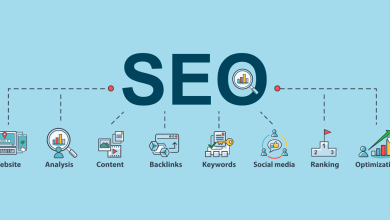How to Select the Right Platforms for Social Media Marketing

With almost around 200 social media platforms available, and marketers saying that you need to be aware of almost 75 of them in order to run a successful marketing campaign, how can you choose the right one for your business? To make this entire process easy for you we have some tips on how you can pick the right channel for your business. Whether you’re just starting out or you are an established business, these will help make the platform choosing end of social media marketing easy for you.
A very important tip is that when you have selected the channels you want to work on, start with working on just one channel instead of having multiple simultaneously. Once you have command over one platform then move on towards another one.
If you launch multiple channels on different platforms all at once you are going to diminish your chances of success. Therefore, slowly and gradually working your way through the platforms is always the best strategy.
Without further ado, let’s dive into the answer to how you can choose the right social media marketing platform for your business!
Assess your Audience
The most important factor to consider when choosing the right social media platform for your business is to keep your audience in mind. Nothing matters more than your consumers engaging on your platform. However, if your audience does not use that platform then nothing would matter. It’ll all be in vain.
While you would say that most individuals use Facebook, what if your audience uses Instagram, then that is where you have to be to create an impact. Therefore, there are many factors in play when it comes to choosing the right platform for your presence.
Keep your Brand in Consideration
When selecting a channel for your brand keep in mind the type of business your run. Additionally consider your brand’s image and what you offer, the products, and services. If you have a visual brand then opt for platforms like Instagram. Whereas if you have a B2B enterprise then LinkedIn should be your first choice.
However, keep in mind that choosing a channel is not all black and white. Big businesses that have a visual brand presence also opt for Instagram. One such example is Apple. While some creative operations go for LinkedIn as well.
It all depends on your marketing strategy. Whether you want to have a broad appeal or target a niche. You have to put various factors together and do what makes the most sense to you and works for your brand.
Define Social Media Goals
Another factor to keep in mind during the selection process is to clearly define your goals. What targets have you set for your marketing strategy? You can begin by having answers to questions like, are you looking to grow brand awareness. Furthermore, do you want to drive event attendees? Or do you want to engage with your customers to enhance communication?
The answers to the questions will help you set goals. Make sure they are measurable and specific. So that, you can later assess them to track your progress. Setting goals will keep you accountable and also help you stay within budget.
Know Your Competitors
One of the main steps when constructing your social media strategy is conducting a competitive analysis. Conduct thorough research on your competitors to learn which platforms are they using and what seems to be working from them and what does not. It is good to learn from the work of other businesses.
You can also assess how engaged their audience is on various channels. This will give you an insight into whether you can yield an audience on that channel and increase engagement or not. The purpose of this assessment is not to follow in your competitor’s footsteps. Rather be aware of your surroundings. So that, you can make a thoughtful decision.
Understand the Different Platforms and their Uses
Each one of the various social media platforms out there has its own way of communication. All hold unique characteristics that set them apart from others. Just like Twitter is an amazing platform for running conversations and learning about trending topics. LinkedIn is great for putting your professional expertise out there. You can also learn a lot about a company through this platform. Similarly, Snapchat comes with its own unique feature so does Instagram.
Therefore, you should put in some time to explore and understand all of the channels you are considering to work on. This will help you get a better insight and aid in your decision of picking the best platform for your eCommerce business.
Set Your Voice and Tone for Each Platform
Your brand voice and the tone you use go hand in hand. Each time you engage in social media activities you reflect the personality of your brand with the help of your brand voice. Your brand voice comprises the three C’s. These are community, culture, and conversation. Along with this, it includes all of the adjectives that would define the vibe of your brand.
Secondly, your tone is a part of your brand voice that is largely based on the audience you are communicating with and the social media platform. There are many templates available that can help set your tone.
Implementing these factors helps to add the human touch to your brand. Ensuring a strong connection between you and your followers. You should communicate just like you talk normally. Try to avoid using jargon in your text, so that your customers can relate to you. This way you can conduct a two-way conversation naturally. You also have to make sure that you are consistent across channels as each and every of your post is a part of your eCommerce brand.
Keep in Mind the Available Resources
Working with social media is a commitment. You have to take care of it, tend to it, and nurture it till it becomes bigger and better. Give it what you expect back, till the time it starts to give you the fruit of your hard work. You need to have a person working full-time in order to manage your presence on various social media platforms. If you are an owner of a small eCommerce business and want someone to work for you part-time then you have to restrict yourself to a few channels only.
Just keep in mind that social media is greedy, it will soak up your resources. Therefore, it is important for you to allot specific resources only. Put in what you think it needs.
Lastly, once you are aware of how the channels work and you have built your presence on the platform. Try to tailor your content to meet the needs and expectations of your audience on every channel. Try and make every channel unique instead of publishing the same content everywhere.




